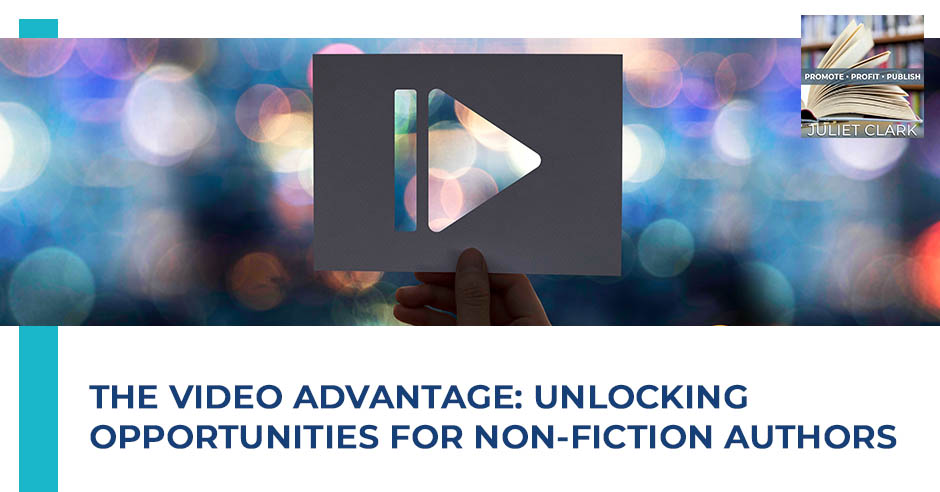
As a non-fiction author, your voice is your book’s most potent amplifier in the digital age. Join us in this episode as we uncover the power of video marketing and its transformative potential for authors. Our special guest Nina Froriep shares a workshop designed to equip you with the tools and strategies to elevate your author brand through the power of video. Discover the art of distilling your knowledge into compelling sound bites, the secret behind crafting engaging content, and why video is the future for non-fiction authors. Tune in to learn how to use video marketing to reach your audience, boost your book sales, and make a memorable impact. If you’re a non-fiction author, this episode will open doors to a world of opportunities you can’t afford to miss!
—
Watch the episode here
Listen to the podcast here
The Video Advantage: Unlocking Opportunities For Non-Fiction Authors
In this episode, we are doing one of our trainings with our guest, Nina Froriep. If you’re someone who wants to get in and see the training and you’re that visual person, jump on over to our YouTube channel at Superbrand Publishing and you can see it over there. Also, don’t forget about Breakthrough Author Magazine. Go over and grab your free subscription at BreakthroughAuthorMagazine.com. Our theme for 2024 is Ditch the Middleman: Strategies to Bypass Book Distributors Fees.
We’ve added a lot of new contributors so you guys are going to get a lot out of it. We have a solid business coach. We have a health coach because we’re catering to that second-wind crowd with this where they’re in retirement mode and starting that new business. We want them to avoid all the shiny objects. If you fall into that category, go get your free copy now because we’ve got some great contributors coming up.
This episode’s guest is someone I absolutely love because she’s so straightforward with everything she does. Her partner is probably one of the best copywriters I’ve ever seen. I would love for them to write my stuff, but Robin is not on now. Our guest is Nina Froriep. She is an award-winning producer and documentary filmmaker. She has seen it all from the early days of independent features to the big National TV commercials, corporate mega shows, and Emmy Award-winning documentaries, including one that she produced and directed called Abraham’s Children.
Nina is a featured LinkedIn Content Creator and Video Marketer. She is excited to enable authors, business coaches, and service-based entrepreneurs to create easy and impactful video marketing so that they can attract their ideal clients and be thought leaders in their field of expertise. Welcome, Nina.
Thank you. That’s a mouthful. As you’re reading, I’m like, “I need to edit this.”
It’s good because before we got on, we were talking a little bit about the second wind platform that we’re going to be running in 2024. That is crucial for these people that your bio is direct. It’s to the point. I can tell you have a ton of experience and you’re not some fly-by-night, “I want to be an influencer.”
I’ve been doing this for a long time. I call them queenagers, which goes into the women more than the men but they’re the second wind.
When you’re in a race and you’re done, then you get that second wind. There are so many retirees out there now and we have them in our own client base. They’re jumping in and they’re a little bit afraid of technology. They’re looking at all these shiny objects when if they just sit down and learn the right tech, it all becomes very easy and it all flows well. What we’re hoping to do with second wind is to stop people from buying all the garbage.
I’m so with you. I love my shiny objects, but when it comes to video production, and we’re not talking about the production part in this episode, we’re talking more about the strategy and the content, but the production and the mindset part are so important because we all have our smartphones. That’s all we need to get good videos, number one.
Number two, there is a thing with people that’s 50 and over. Also, it has nothing to do with the age as much as with the generation being Gen X-ers and Boomers. There is this, “Why would I show up on video? Why would I put myself out there? Who wants to hear from me?” There’s that conversation that often happens. It’s easier to hide behind the book and behind the written word. It’s a much more uncomfortable. Believe me, when I turned 50 and I had to be in front of the camera instead of behind the camera, it was not pretty, but you get used to it.
Nina, if I could interject here. If you’re sitting there now over 50 thinking, “I don’t need to be on camera,” that book you’re hiding behind is not going to generate enough revenue for you to make a living. It’s what you do with that book and the courses afterwards, which do require you to be on camera.
Also, just talking about it, showing it to the world, and making people aware of it. People buy from people. People buy where they have a connection, where they have the story beyond the story of what is on your pages. It’s important that you give them. You don’t have to give them a five-hour exposé on your life and why you wrote the book but you have to give them little nuggets to get them even to come to your book.
I have some slides that’s talking about technology. Welcome to Video Strategies That Attract Your Ideal Audience. That was what we have been talking about. This is not just about getting out there and saying, “Here I am.” It’s about talking to that person who will connect with what it is that you have to share with the world. That is what we want. That is where video is so brilliant with because it creates that much deeper and emotional connection between you and the watcher or the audience to then hopefully drive them to your book or to your courses, wherever you are within your journey.
Video is so brilliant because it creates that much deeper, even emotional connection between you and the audience. Share on XWe’re a small group here. If you have questions along the way and there are questions that pertain to what I’m talking about, please interrupt me because the questions asked when they are relevant is super helpful. If you have any questions more about production, shooting, the equipment or all of that, let’s save that for the end because then we can do that in one neat little ball when we’re done with the presentation.
Since we’re such a small group, I’m not going to ask the whole like, “Why are you here? What do you want to get out of this?” because I’m going to assume that you’re going to jump in when it becomes relevant for you and then we can have that conversation organically. Juliet, you had mentioned my partner, who is a fantastic strategist and an awesome copywriter.
Why I have that slide up is I love the picture because it gives you a sense of how serious we take ourselves. We take our business seriously, but we do not take ourselves seriously. That’s really important to survive doing what we do. Why we do what we do is it drives us nuts when people spend too much time and money on the shiny objects and all those things that do not help you get to where you need to go.
The things that you need is you need a solid strategy and a framework to execute on the videos. I always say, “I want videos for you to be as easy as writing an email.” When I say writing an email, it’s not like we do it now, but maybe some of you who are a little older remember the days where I have to crawl under my desk, unplug my jack from my phone line, and plug it into the computer. I write my emails and it was like a ten-step process. I have a little checklist to make sure I didn’t screw it up.
When I would send my email, I will crawl under the desk and plug in my phone again. Look how easy emails are for everybody nowadays. That’s what I’m hoping your journey can be for video as well that it becomes easy and second nature. Also, it should be fun, hence the picture. Before we go into strategies, we’re going to have two sections. We’re going to have a strategy and we’re going to have a content section.
The content section will be about content creation and also about some samples of videos if we have the time to go there. Before we go there, I want to talk about what video marketing is. What does that mean? Video marketing means a lot of things to different people. The way I break it down is the way any kind of audio-visual media will be created, be it a feature phone, be it a documentary, be it a TV show, a reality show, be it a corporate video, or be it your content.
There is, first and foremost, strategy. The strategy, in the future film, would be development. Also, there is content creation and script writing, but it’s also the ideation around it. There’s also the shoot, editing, and there’s the so-called distribution which, in our world, is hosting and posting. In this episode, we will go into strategy and content creation. As I said, if we have some time at the end, I would love to answer any questions you have about shooting, editing, hosting, and posting videos.
I made this circle. Although some coach told me I had to make it a line so that people felt like there was an end to it. I’m like, “No. It is a circle because whatever happens through step 1 through 5 goes back into your strategy because depending on how you’re content performs or doesn’t perform, you will take different actions the next time you go around strategizing your next round of video.” To me, this is very much a circle and not a straight line. That is how we think about video marketing to make it as simple and easy as possible to grasp what the different steps are that we need to focus on. Do you have any questions up to now?
I do. I love that you said that about the circle because there’s repurposing that goes on in there as well, so it’s not like it stops as you were talking about. That’s a great way to put that.
You can recycle to content. We’ll talk about that when we get into the content creation part. It’s a circle for many reasons not just the reiteration of what you learned but also the content. Let’s get into strategy. The way we think about strategy when it comes to video marketing on a very high level is that we ask our clients, “Do you want video?” Normally, when they come to us, they want video, so it’s a yes. We immediately ask, “Do you want videos for your website or do you want videos for your social media channels?”
Very often, it’s both, but the reason why we ask that question is we divvy up what kind of videos serve what purpose and how you create them. The way we think about it is there is your website videos, which we’re calling legacy videos. These are videos or videos that have a much longer shelf life. You might also learn the scripts by heart and then shoot them. You might even want to shoot them with a little bit more production value.
On the other side of the spectrum are what I call tissue videos. If you google it, nothing will come up. I just invented that term. By tissue video, I don’t mean that you’re all going to be sobbing your way through the video. It’s like, “Grab a tissue, sneeze into it, and throw it out.” It’s a one-use video that goes on your social media. If you’re lucky, maybe 200, 1,000, or 50 people will see it and then it’s gone and done and then comes next day’s content and the next.
Some of these videos are also recyclable, but in general, we separate the two. Why I drew this little layout is you need to. This is why Robin and I do what we do. You need to know how to do yourself these tissue videos because if you do not, you’re going to either not have any videos, which in my humble opinion is a no-go but I’m slightly biased, or you will be spending a ridiculous amount of money, time, and gray hair hiring somebody to shoot those videos with you and for you.
Since you need a lot of them and you want them to be coming in a regular basis, it’s not doable if you’re a small business. That’s why I have the little done-for-you is a no-go unless you have inherited a ton of money and you can afford to do so. Good for you, but most of us don’t. You need to know how to do those videos yourself.
It’s the same to a certain degree for the legacy videos. We have a little course called The Five Videos Every Service-Based Business Must Have And How To Write Them. It’s a course that helps you write those first five videos. If you do any videos at all, it would be those five. They go on your website. You can put them on your social media and pin them. Those are videos like your mission statement, your elevator pitch, and your problem solve video. They are the basic videos, and those I feel are the only videos that you should have scripted because it’s language you’ll need anyway.
If you go and you introduce yourself at any kind of networking event or you’re doing public speaking, podcasting, and stage work, you need to know your elevator pitch, mission statement, and what you do for people, the why and how. Those are the videos that you should have at an absolute minimum. If you can do those yourself as well, and if you learn how to do it yourself on this side, you will also know how to do it on this side. It allows you that if you’re pivoting ever so slightly or you have a new book coming out and you want to position yourself slightly differently, you know how to recreate or reshoot those videos.
What I want to do next is I want to spend a couple of minutes going through what you need to think about in order to get to a decent strategy for your video marketing. I’m going to go through these fairly quickly because this is not a hands-on workshop per se. I have two sheets. They’re divided between the actual strategy and the second sheet is less strategic question and more production-related questions like timing and budget, etc.
They all tie in with one another. Normally, by the time I get to number 3 or 4, it has become irrelevant. I want you to have seen this sheet and take notes of it because these are good questions to ask yourself. These can be questions that can be answered quickly. This is not a five-hour exercise. This can be a very quick exercise, especially if you’re already in business, you already know what you’re doing, and you already have most of these questions answered for your overall marketing, which is the first strategic question.
How does video tie into my overall marketing strategy? Where does it make sense for me to use video? Not all content is naturally video content. When Robin and I come up with a new series of things you want to talk about, a new topic, a new thing we’re promoting, a new service, or a new product, we always ask ourselves, “How do we convey this message? Is this a poll? Is this a JPEG? Is this an infographic? Is this a video? Is this a written post?”
Once we have that question answered, we break it down into, “We need a six-video series that goes with the written post. We need these three JPEGs designed. We need this kind of carousel with five slides that explain something.” We make sure that our content is best disseminated such that it makes sense for what it is. How does video tie into your overall marketing strategy so we don’t fall into the shiny object of, “Everything’s going to be a video now because I learned how to do videos?” It is great, but with caution. Stories are better told sometimes not with video, but if it’s video and you want to use video, this is a great question to start with.
The next question you want to ask yourself is, “What’s my video’s context?” When I talk about context, there are going to be videos on your website. There are going to be videos on your social media. There might be videos on a little sales landing page that stand on its own. There might be videos, especially the authors of you are putting together an electronic press kit. It’s so important to have video. It’s so important to know and ask the agent who’s handling your press kit or was ever helping you where this video plays.
Will this video be downloadable? If it’s downloadable, make sure that you have a logo in there. Make sure that your website is in there because the video goes on a journey without you knowing where it’s ending up. You need to make sure the video can stand with itself and have all the information it needs to have so if it gets disassociated from your website, your YouTube channel, or from your social media profile, people still know who you are, what you’re talking about, and how to reach out to you because that’s all the reason we’re doing this.
For a video that plays on my website, I’m probably not even going to put a logo on there. I might not even put my name on there because it’s within the context of my website. People know who I am and people see the big logo on the top left on my website. They don’t need to see it again necessarily in the video. Number three, which is the question that some people make a whole career out of answering for other people is, “Who’s my audience?”
Everybody with skin, which I think is a Dove commercial, is lovely for Dove, but for the rest of us, it’s X. Make sure that you are very clear on who your audience is. The more niche you are, the better. You can always expand from a niche outwards again, but make sure you have that nucleus of rabid fans that love everything you say, you put out, and you do. It’s because if you have those, then you can work yourself outwards from there. Whatever content you create, keep that core audience in mind. You’re speaking to them first and foremost.
Make sure that you are very clear on who your audience is. The more niche you are, the better. Share on XWith that comes the next question, which is, “Where does this audience hang out?” When I say channels, I mean social media channels. Is your crowd a LinkedIn crowd? Is your crowd an Instagram crowd? Be very clear on where your crowd is and then do one platform and do it superbly well. Make sure that you always engage actively with whoever engages with you. In the early days, I was like, “You can be on all the channels because once you create the content, you can resize it or cut and paste it all over the place.”
Yes, you can, but before I didn’t make a commitment to LinkedIn and say okay, “I’m going to do LinkedIn really well to point that I’m now a LinkedIn expert,” I didn’t get any traction because I was flooding around between Twitter or X, Instagram, Facebook, and Linkedin and I didn’t do any of them right. Now that I do LinkedIn well, the others, I still post there. The stuff’s there. You can cut and paste, but my engagement, energy, follow-up, and conversation, I put all of that into LinkedIn and it’s paying off handsomely now that I’ve landed on that one platform.
I want to add there, Nina. It’s the same here. I’m not on Facebook. I’m not on Instagram. On LinkedIn, I don’t do as well as Nina, but I’m learning. We’re getting a little bit over on YouTube because of the show. Again, it’s that strategy. LinkedIn is ideal because if you’re running a business, the average income over there is $75,000. You’re avoiding what I call those broke-ass people.
It’s not only that, Juliet. There’s only 1% of all the millions of people who hang out on LinkedIn who are creating content. That means that you have a real chance of organic growth and getting clients, which is not the case on any of the other platforms. On any of the other platforms, if you want to get clients and real growth, you need to invest in advertising or massive amounts of posting. On LinkedIn, you don’t. We think LinkedIn makes sense for an awful lot of reasons.
This is for the service-based. As an author, you probably are in the service-based world. I’m going to assume for now. LinkedIn definitely is a great platform to consider to put your efforts into. I have a beautiful little slide that talks about call to action. What do I want my prospect to do after watching the video? This is not just video. This is every written post. All content that you put out, you must have a call to action at the end.
You need to tell people what you want them to do after they’re done reading or watching your stuff. It doesn’t need to be salesy at all. This is a whole other workshop. We talk about the low-friction and high-friction call-to-actions. A low-friction call-to-action, I do that with every post. I ask a question about the content I just wrote or the video they watched, “What is your opinion on X?”
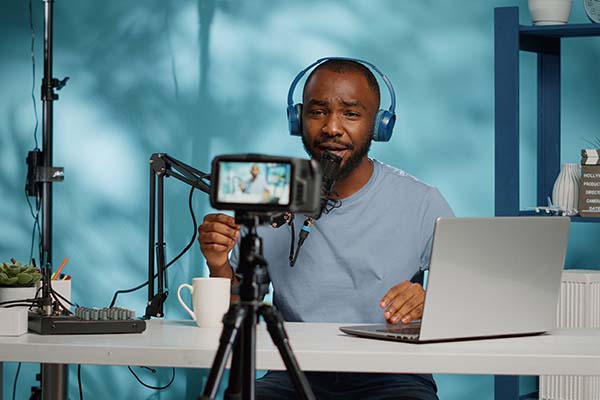
Video For Authors: You must have a call to action at the end. You need to tell people what you want them to do after they’re done reading your stuff or watching you.
Let’s say I do a video on call-to-actions. My question at the end will be, “Do you use call-to-actions on every single post that you put out there? If so or if not, why not?” Make sure that you always ask people to engage with you because that’s a whole reason why you’re putting stuff out on LinkedIn. Nothing is more infuriating than somebody who writes a beautiful long post and then I’m like, “What am I going to write? How am I going to engage?” I’m just going to go on to the next content.
However, if you ask me a precise question that is easy and quick to answer at the end, I’m going to write a little answer because people love answering good questions. They can’t help themselves. You know who that person is. You can engage with them, ask them, write them back, or say, “Thank you so much for commenting on my posts about X. Would you like to be connected? Would you like to be on my mailing list?”
You then now have a way to get into a conversation with people. If you don’t ask them a question, you don’t have a way. Call to action is super important. A high friction call to action is, “Book a call with me,” or, “Buy my book.” Those should be used very sparingly. It cannot be your standard call to action because it takes a lot for people to go to a link and sign up for a call. Even if it’s a freebie strategy call, it takes a lot. Make sure that you put those in sparingly and well-placed.
Also, the style of the video is more something I put in when I still had a lot of much younger people work with me because the casual tone you might have on the TikTok or on a Facebook will not play on LinkedIn. First of all, be brand-conscious. What is your voice? How do you want to present yourself? Your video has to reflect that. What is the tone of the platform you’re on?
Is this a casual platform where you’re expected to break out into song and dance, or is this LinkedIn where it’s much more professional and a little more sedate? Also, it doesn’t mean that you can’t be funny because funny always sells. There are people who are making a career just out of that funny videos. There are some good people on LinkedIn. Those are the strategic questions you want to ask yourself going into a video marketing strategy. Are there any questions?
Nina, I have a question. The video style also needs to match who you are. I’m a very informal person. I’m not going to be formal even on LinkedIn, but the presentation of the content is the distinguishing thing. I don’t want to be like, “Oh,” or some flippant remark. I want to give real solid content, but I can do it in my informal style.
Absolutely. This is important. We have a fun quiz called What’s Your Video Personality? You want to make sure that you are authentically you but within the framework of how you show up professionally for your clients. I love cracking jokes. As Juliet said, I’m a very straight shooter. That comes through in my videos. If somebody doesn’t like that style, they’re never going to sign up with me or book call with me, and that’s fine because then it’s like a self-selection tool.
You definitely want to make sure that your personality comes through in your videos because people want to get to know you. You want to show up the way you show up when they meet you on Zoom. I’m assuming that most of us are still in the digital world with our service offerings. You want to make sure that comes through clearly. Just because LinkedIn is more professional doesn’t mean there is not lots of space for individuality, for fun, or to have whatever makes you come through and shine through.
Just because LinkedIn is more professional doesn't mean there's not lots of space for individuality or for fun. Share on XThe litmus test I tell my clients is be the person on video that you are in person because nothing’s worse than meeting that person in person and there’s that immediate disconnect because that will turn people off right away.
It’s like a bad date. You’ve swiped right and left and then you meet the person. They’re 50 pounds heavier and twenty years older. It’s a big disappointment. My biggest compliment is when people meet me in person or on Zoom and say, “You’re just like your videos.” That is what you want. That would be your litmus test right there.
“Did you think I wouldn’t notice that you’re about a half a foot shorter than you said you were?”
That is very funny because you never know. I have this person who works with me. When I met them for the first time, I was like, “Oh,” because you’re always on Zoom and you are face to face. This person is really tall. I didn’t know. I was like, “It’s totally not the physical appearance I expected.” You never know. I’m not going to go through the production sheet because it goes too deep for what we’re doing now. I also want to keep an eye on time.
However, the only one thing I do want to say is to ask yourself these questions. They are very important. Question number nine is, “What’s my budget?” No budget is not a budget because your time is extremely valuable and whatever you do yourself is your time. Make sure that if you do choose to do videos yourself, including the posting and the editing, make sure it is worth your time. It might very well be that it might be outsourced better because an outsource person can do it much faster, better, and quicker.
I’m thinking here in particular about editors. Also, be aware of what your video format is. Nothing is worse in my opinion than LinkedIn and vertical videos. It pisses me off. I have to say I’m a filmmaker so I’m partial to 16×9 horizontal, but that’s also how we watch TV. That’s how we see the world. I think horizontal is a lot more flattering for many reasons. Unless you’re doing reels on Instagram or TikTok, then by all means, go vertical. Otherwise, stick to square or horizontal.
I’m going to move into content creation because there’s so much to cover. The way video works is we have the strategy part which is one part, and then we have the content creation, the shooting, and the editing which comes as a bulk. It’s what I call production. You could also call the shooting and editing production, but without a script or bullet points, you’re not shooting anything or you’re shooting garbage.
The whole production process is handled best is to do it in bulk. We are huge fans of creating video series. It’s because if you create a series, you can then put your brain. You want your videos for social media to be max of 60 seconds. You want them to be short. If you have this much of ideas, you want to make sure you cut them into little snackable-size or bite-size portions. I always tell people that if you have a lead magnet or a thing that you give people for free in return for their email address and, in my case, it would be like, “Nina’s Top 15 Tips on How to Survive Video Marketing,” that is not one video. That is 15 videos or even 16 if I do an intro video or maybe even 17 if I do an outro video.
Now, I have this one asset out of which I can make 16 or whatever videos and have 16 posts. Each of the posts can be, “Now, we’re going to talk about why you should never use a ring light when you’re shooting. Here’s a short video that explains why. Here’s my text about why.” At the end, the call to action is go over to YouTube and check out the entire series or, even better, “Click on this link and give me your email to get the whole list of the fifteen videos plus a link to all the content.”
This way, I have a whole series of content that keeps giving. Those tissue videos, notwithstanding, I might actually recycle. Once I’m done with the sixteen videos that I post one every week or every other week, four months later, no one will remember what I posted and I can start over again. Creating content in binge-worthy portions is crucial to surviving video production on the long run. If I have bigger groups, I’d workshop this. It’s like, “Define binge-worthy.” The answers I get a lot is Netflix, some series, or things that always stop at a cliffhanger.
However, we can create binge-worthy in our world for our audience. I always give this example. A couple of years ago, I got into drawing Zentangles. It’s a repetitive pattern kind of drawing on that on a small little card. It’s very Zen, hence it’s Zentangle. I totally got into it. I went on YouTube and I was looking on how to draw these patterns. I was looking for how-to videos. Before I knew it, it was two hours later. I had watched four 30-minute videos.
The videos weren’t well made. They weren’t the best production value, but it was right then and there. It was timely for me. It was educational and it was engaging enough that I stuck with it because I had a burning desire to learn that. If you can get your audience into your content with videos such that you give them nuggets of what they want to learn or what they want to know but you are giving it to them in little bite-size portions, you not only have stuff that you can create in bulk to save your time and energy.
When I shoot video, the actual shooting of the video is my least cumbersome part of shooting video. The much more cumbersome is like, “I need to wash my hair. I need to put some makeup on.” I normally don’t put makeup on. I put make-up on for you guys. Makeup means just a little bit on the eyes and lips. You put on makeup, do your hair, and dress nicely. Make sure your lights are okay. It’s always a little fiddling. When I come to the actual shooting, it’s boom and boom.
If I do all of that set-up work, I want to make sure I’m shooting at least some opinion pieces that I can maybe get 3 or 4 out before I fizzle out and have no energy anymore. Now, I have a series of 60-second videos on the extremely important guide to surviving video. It’s tongue-in-cheek little 60-second one-sentence soundbites on how to do this, that, and the other about video marketing. I have 32 at this point. I shoot those in 14 to 15 video bulk sessions.
I have content for that. I put one a week out. I have three months’ worth of video every single week at least one. That is how you want to maximize your time in creating and people now are in tune with the fact that I have these tongue-in-cheek little videos that I put out every week. It then becomes a thing. People look forward to it. “When is the next installment coming? What is the topic going to be?” I send them to my YouTube channel. They can watch all of them if they want to. This way, my YouTube channel gets a bit of a boost. It’s a great way to get people A) Engaged with you and B) Make sure that you have your content not eat you up alive creating it.
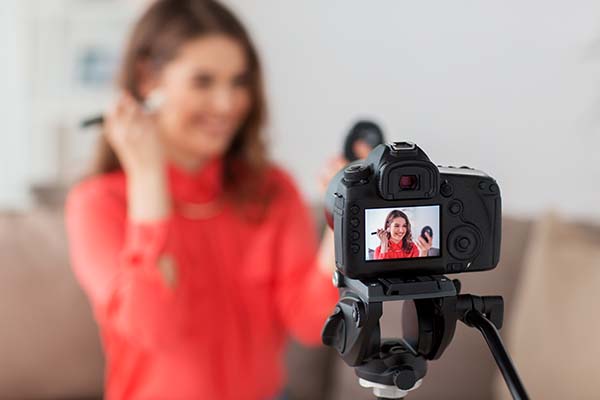
Video For Authors: It’s a great way to get people engaged with you. Make sure that your content does not eat you up alive creating it.
Can I ask a question? When you do the binge-worthy in bulk, do you script that? Is it all very scripted?
Thank you so much, Linda. No, I do not. The only videos that I scripted and I suffered through it terribly was these legacy videos because I felt that these were the five videos that I needed to get right because I was talking about my mission, my background, how I solve the problem for people, and what my offerings are. Anything else, I do not script. I am terrible at learning scripts by heart and I never allow for teleprompter or for cheat sheets because the cheat sheets and the teleprompter make you stiff and your eyes shift all over the place.
I always say to make your videos short enough. Also, make sure that you’re clear on how you introduce yourself and how you get out of your videos. It’s equally as important because that’s the last thing people see. You’re the expert in your field. If there’s one topic you want to tackle or one tip you want to give, I bet you my heinie you can remember how to do that. Sometimes I do one take and I’m done. The video’s great and I love it, but some of them I have to do ten times because I have to talk it out first.
I always do them ad lib, A) Because it’s more natural and it’s much more engaging for my audience to watch me that way even if I blunder a bit and B) I do not want to edit-edit. I take my videos. I throw them in a little app in my phone and I trim the beginning and the end. I throw in the logo. I throw in a title. It takes me no longer than three minutes to edit a video. I’m not exaggerating. I then send it to my virtual assistant to put closed captioning on it because I find that cumbersome.
It is that easy. If you’re ad-libbing and keeping it short, I’d rather spend longer shooting the thing to get it right, ad-lib, and then, “I like the first half of this one, but the second half of that one I’m going to edit.” You’re either going to never put the video out because you never get to the editing or you’re going to have to hire an editor for those tissue videos that you want to keep quick and simple. Now, the legacy videos, there’s one that’s a little longer. I can never get it out in one setting. I now do that in three little blocks because I want to stick to the script and I can’t get it out otherwise, but that’s the exception.
Here are some content ideas I want you to consider. Educational top tip and expert series, we just talked about that. If you go to my LinkedIn, I put one of those a week out. I now have 36 of them. I want to get to 52. For the foreseeable future, I have a week for a year and then I recycle them and start from scratch again. Those are made square just because I had this long title and I need it. I wanted it to show up the whole time so people understood that this was a tongue-in-cheek thing. The tips are solid. It’s just the way I present them.
We have the lead magnet series, AKA your book. Those I’m hot on because it’s a great way. The first quiz we ever had that we did with Juliet, I made a video of every single question and then I could put those up and then I always ask people to take the quiz. It was a perfect way to get people engaged and get their email. Also, for us to have content that we could recycle. We didn’t have to rewrite the post again. We didn’t have to reshoot the video again. It was just cut and paste. It was a beautiful thing and we did that for quite a while for two years or so.
Next is the industry disruption series. I mentioned that because, for you as authors, that can be a really nice way for you to talk about your books and about what it is that you do differently or what you’re experience has been. Those are videos I allow a little more time for and to go a little deeper. I have a series called Conversations About S*** That Matters. That, for me, is a series where I talk about video mindset and about how to post personal stuff on social media, surviving it, and not going into an awful TMI situation.
I feel that those videos need a little bit more depth. That was what I mentioned. If I’m doing opinion pieces, I can maybe do three of those in one sitting and then I’m pooped because they’re about 2.5 to 3 minutes long. That is the series. It’s on my YouTube channel, all of them, if you want to watch those. There are other ideas, but what I also want to talk about briefly is client testimonials because there are various different ways to get ahold of those.
There’s a straightforward client testimonial, which this friend of mine and former client, Jody, gave me a beautiful testimonial. It was your classic ask somebody to do a testimonial for you. Even for us video marketers, it’s hard to get people to do these so I wouldn’t count on those being your staple because people say, “Yes, I’ll do it,” and then they’ll never do it or they’ll do it when you don’t need it anymore, the promotion has long come and gone, and you’re on to three new things.
What I do, which is much easier, is I invite clients or, in your case, readers or course participants into a conversation with me on Zoom. The way I do it is I structure it as a deal for them. I give them 60 minutes of my time. They get to ask me for the first 45 minutes whatever they want so they’re getting a $400 value one-on-one with me, but then I also show up presentable and looking smart. In the last fifteen minutes, I will ask some questions about their experience with me in the program. I have a list of standard questions I ask. “How was it before? How was it during? How was it after?”
That gives me then not only one testimonial that I sent to my editor and I say, “Pick out this and this soundbite,” but now, I have 3, 4, or maybe even 5 depending on how good of a soundbite talker my client is. That’s testimonials that I can use. This is my preferred way of getting client testimonials because it’s in the books. They know when they’re showing up and you have it guaranteed. The only thing that can happen is I have one client and she talks in circles.
I can never use anything she gives me. I’ve tried three times and it’s like, “Okay.” For the most part, people understand what I’m looking for and what I want to get. I’ll ask the same question in three different ways until I finally get the soundbite I’m looking for. This is another way to get testimonials. If you have groups, sometimes there are these involuntary things. I’m going to read this one briefly because it’s just such a beautiful little soundbite from Stephanie down here. I was like, “I am happy I’m recording this because this is going to be a testimonial.”
“I’m excited to report that I planned five days a week of social media content through the end of October. This is huge for me. I’m finding so much value in this series of exercises that you’re leading us through. It’s mind-blowing for me. I feel so much security in having that plan out there because I know that everything that I want to talk about in the next six weeks is going to get talked about now because it’s on schedule. I feel very satisfied and not so overwhelmed. I’m happy about that.”
Those are the moments. Don’t let them slide. You can go in, trim it, and use it. It’s easy enough. These are the kinds of moments where I’m like, “Yes.” Client testimonials are important for all of us to have those. Sometimes it’s nice to have a quick written statement because people read much quicker than they’ll watch a video. It’s nice to have those video testimonials because, for most people, they just read. It’s more authentic and more like, “This is a real testimonial.”

Video For Authors: Sometimes, it’s nice to have a quick written statement because people read much quicker than they’ll watch a video.
These are great, but to let you all know, we all have this amazing content like what we’re doing now. It can be a live stream, a podcast, or just a conversation you’re having with an expert and other expert on Zoom. That’s a long format that you can put out, but take it and cut it up and make micro content out of it. The beauty of it is if you are talking to someone else, a guest or an expert, you can grab those little bits and pieces where they say something brilliant or you’re both saying something brilliant. You can put that out and then tease people to the longer program where this comes from.
I used to have a podcast. It’s on hiatus now. I did it monthly. Every single conversation I had netted me at least five top-notch quick soundbites so I had more content than I knew what to do with. It’s because that was the gift that kept giving and then you could post it. I could mention my guest or my expert so they would share it with their audience. It was this whole little ecosystem that was fruitful and a great way to get more people into my orbit and to my platform.
Nina, can I ask the question? I use Opus.pro for that. What do you use? Do you use a software? Do you do the micro-content yourself?
I go old school. I have a fabulous editor. I give it to him and make him choose the clips unless there’s a clip that stood out to me throughout the conversation. I let him choose because he’s a fresh set of ears on the conversation. He’s a professional editor. That’s part of his job. There are a lot of great AI tools out there now who will do that for you, especially if you put in the keywords that you’re looking for. That works as well. I happen to have a good deal with an editor that is probably in the end costing me about the same amount. He also then edits it and makes a nice title and close captioning. He delivers me my five assets that I want: the thumbnail, the video with and without captions, the captions, and transcription, all of it. That’s worth it for me.
He charges me around $70 to $100 depending on how long the conversation was for one pod. That has always been worth it for me for the ease. If you work with an editor, having set up a workflow, then it becomes such a quick and easy thing to do. I have more, but I also feel that there might be some questions. If there are questions, I would love to open it up to questions. If not, I can go to that last topic I have. It’s up to you.
I have a follow-up question, Nina. I’m very interested in doing these tissue videos probably on my computer and I have a cousin who is my editor. He edits and he’s professional editor. I would imagine you have an idea before you go in. “I want to do this and that on the videos,” and then you just ad-lib. Is that the way it goes?
I have more than an idea. I have a strategic plan of what I want to talk about and why. If you have a book launch coming up and I’m going to be like, “I want to start talking about the book launch three months before,” I’m going to want to put out a video every week and I want to talk about the 12 or 10 chapters I have in my book. I’m going to outline very precisely what I’m going to talk about and make sure that I have one point per video.
The one thing I spend a little bit of time on is making sure that I know what my introduction is and I know what my out is for two reasons. Number one, once your brain gets used to saying the introduction, it snaps into performance mode and it helps you with your delivery. For instance, I have The Extremely Important Guide. It’s always, “Welcome to The Extremely Important Guide to Surviving Video. Our topic is ring lights. Why not use them?”
I then go into it and, at the end, I say, “I hope this was helpful. Happy videoing,” and I wave. The wave by the way is very much on purpose because then when I’m editing, I don’t even have to listen to what I say. I just know when I wave and my hand goes down, that’s where I edit. It’s not because I’m so friendly that I want to wave. It has a very functional purpose. Make sure that you have the signature intro and the signature outro so you don’t have to think about those because if we do, that’s where we start rambling and get into not a good headspace.
It’s very helpful.
I have a spreadsheet and I practice the intro if it’s a new one like, “Welcome to The Conversations About S*** That Matters,” and then I go into it. At the end, it’s like, “Remember, you matter.” I’m doing a word game on that. I’m very intentional about my call-to-actions and my intros.
Do you set a time frame for these so that they’re consistent? For example, if your time frame is fifteen minutes per video so that they’re pretty consistent and people know that if it’s 14 or 15, it’s not that big of a deal but between 5 to 15?
Nothing is ever going to be fifteen minutes, Christine. I hope not. Unless it’s a course that you’re giving. It’s going to be 60 seconds or 90 seconds. I allow myself up to two minutes. If it’s longer than two minutes, I’ll keep recording until I hit below two minutes. On LinkedIn, the best-performing videos are 60 seconds and less. If a video is 60 seconds or less, it means it’s going to be watched to the end. Since you have your call to action at the end, you want to make sure people watch to the end.
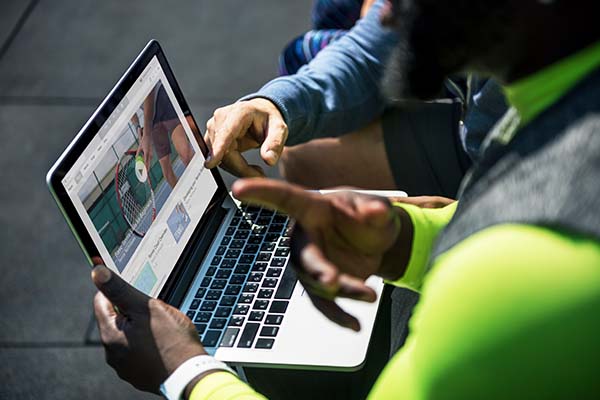
Video For Authors: The best-performing videos are 60 seconds and less.
In my case, I have been on LinkedIn for so long and I have a very dedicated following. I feel like if I want every once in a while do one of those Conversations About S*** That Matters, which are three-minute videos, I get away with that. However, for instance, my series with The Extremely Important Guide, those are all around a minute. I make sure that they are because that’s the whole thing. People’s commitment to having to watch me is 60 seconds. I want to keep that up.
Do you set a timer, Nina?
No, because I don’t want it to go off while I’m talking.
How do you know that you’ve reached the 60-second mark?
I don’t. I’ll see it at the end when I watched a clip back. I’ll record and record, and then when I have a clip I like, I will heart it. In each video, only like a favorite one clip because if you do more than one, you will not see the difference anymore afterwards. Go with your feeling, “This was the perfect clip.” I’ll watch it and the phone will tell me how long the clip is. If it’s, all sudden, 2 minutes and 15 seconds, I’m like, “It was a good clip, but it’s way too long. Do again.”
If you’re direct into the point, that timer doesn’t matter. If you know exactly what you’re going to say, I will aim for a minute and I rarely end up a minute because I’m just boom and boom, “See you. Bye.”
When you do my video personality quiz, I, for instance, is a storyteller. I love to expand and go into more detail because that’s my nature. There are videos like the Conversations about S*** That Matters where I allow myself to do that because that’s a purpose of the video to go a little deeper. With my tip series, which is what we’re looking at now, I will restrain myself and focus on being educational and not being so much a storyteller but I have to make myself focus on it.
Nina has a free gift for you. If you are someone who gets Breakthrough Author Magazine, Nina has an offer on the back cover of this month’s magazine. If you don’t have the magazine, go over and DM her on LinkedIn. Connect with her first and DM her. Put my name in it, but give your email as well because she’s going to put you on her list and she’ll have an extra deal for you on that.
I have a question. I’ve heard a lot about soundbites and I’m not quite sure what that is. Can you please explain it a little bit further? I know it’s probably more concise about what you say in a short period of time.
Nina, what she’s talking about is she’s working with our media expert. I know you’ve been the same thing on a big production show. That’s what she’s referring to.
Soundbites are small nuggets of information that you can give that are useful to your audience. I know for authors because authors, by nature, probably are all storytellers. It can be hard to synthesize all that vast knowledge that you have to a quick sentence. Think of it like the all-famous elevator pitch of what you do. It can be an elevator pitch of, “In this chapter or in this section of my book, I talk about X.” Think of what is the distilled version of X such that somebody can walk away and say, “Christine have made this amazing point about why.”
Authors by nature probably are all storytellers. Share on XA soundbite would be like what I said. Make sure your video is one video, one topic, and one call to action. That is a soundbite. You don’t even have to say more than that because if they’re curious, they’re going to go, look you up, and look for further information. It’s like a tease. If that doesn’t come natural to you, I would say also, to Linda’s point, to make a list of those talking points and practice them a little bit.
Thank you.
I have one more thing to add to that. Christine, give yourself a lot of grace in learning to put those together because this is like when you wrote the back cover copy for your book. You took 400 pages and put it into a paragraph. It’s hard. You’re someone doing the same thing here so it takes practice. Be gentle with yourself when you’re learning.
I’ve been doing this now for quite a while. I’ve been in business for many years. We were a traditional film and video production company for the first nineteen years. In the last couple of years, I’ve started doing this video marketing and helping people and small business owners with the do-it-yourself approach of video. When I went in front of the camera right after my 50th birthday, I went kicking and screaming. Those first videos were God-awful. I try to script myself. I try to learn scripts by heart. I rearranged my entire apartment and put this huge setup.
Those videos were unwatchable. They were painful. If you see me now on video and I’m all laughing and it’s all easy and it comes to me, that is years of practice. It doesn’t need to be awful in the beginning because if you have somebody like me who can show you how to get there faster, then you can avoid a lot of this. I also think we all have a lot more facility back then. There was no Zoom. We weren’t Zooming yet. We weren’t used yet to seeing and hearing ourselves on video, which now we all are.
Sometimes, it’s easier to maybe start with doing what you are comfortable with, which is sitting on Zoom, talking to yourself, and seeing what that looks like. I would recommend you shoot when you shoot for your videos that you want to put out on your phones because they’re much better quality most likely than your camera is going to be on your computer. The technical aspect should not hold you back. If the video is a little fuzzy, so be it. More important is that you know what you’re saying, why you’re saying it, and to whom you’re saying it.
Here’s the other thing, too. Have somebody else look at your videos because in the beginning, you’re going to micromanage yourself to death. I’m not kidding about that. You will find things wrong with your face and your expression that you didn’t get it right. Back when we used to do Jeff Walker-style campaign launches, I spent two hours for a one-minute video and then I got frustrated. I went down to the pool. I had a smoothie. I got back on and nailed it. When I re-watched it, I had a big chunk of spinach from my smoothie in my teeth.
Once you have practice and you stop micromanaging yourself, you’ll be able to nail that and it’s like, “That’s me. Go with it.” Keep that in mind as well. I know Christine knows what I’m talking about. She did an entire TV interview with lash glue in her eye, which I don’t even know how she got through that because it burns like hell. Be gentle and have somebody else look at it who can give you critique because I do swear that you’ll find everything you can wrong with that video and probably no one else will notice.
I have to tell you that I went through almost an hour interview with someone. I finished the interview and had mascara all over my right eye. I emailed the host and I said, “Did you see anything? Could you erase it? Could you have the editor?” He said, “I haven’t seen anything, but I will take care of it.”
Nina, we can find you over on LinkedIn. Go over and take her quiz. Nina, thank you so much. This is very informative.
Thank you. That was fun. I hope you all are taking something away to make video a little less daunting down the road.
Important Links
- Nina Froriep
- Superbrand Publishing – YouTube
- BreakthroughAuthorMagazine.com
- The Five Videos Every Service-Based Business Must Have And How To Write Them
- What’s Your Video Personality?
- Opus.pro
- YouTube – Clock Wise Productions, Inc.
About Nina Froriep
 Nina Froriep is an award-winning producer and documentary filmmaker. She’s seen it all, from the early days on independent features to big national TV commercials, corporate mega-shows, and Emmy award-winning documentaries, including one she produced and directed called Abraham’s Children.
Nina Froriep is an award-winning producer and documentary filmmaker. She’s seen it all, from the early days on independent features to big national TV commercials, corporate mega-shows, and Emmy award-winning documentaries, including one she produced and directed called Abraham’s Children.
Today, Nina is a featured LinkedIn Content Creator and Video Marketer and is excited to enable authors, business coaches, and service-based entrepreneurs to create easy and impactful video marketing so they can attract their ideal clients and be thought-leaders in their field of expertise.
Love the show? Subscribe, rate, review, and share!
Join the Promote, Profit, Publish Community today:

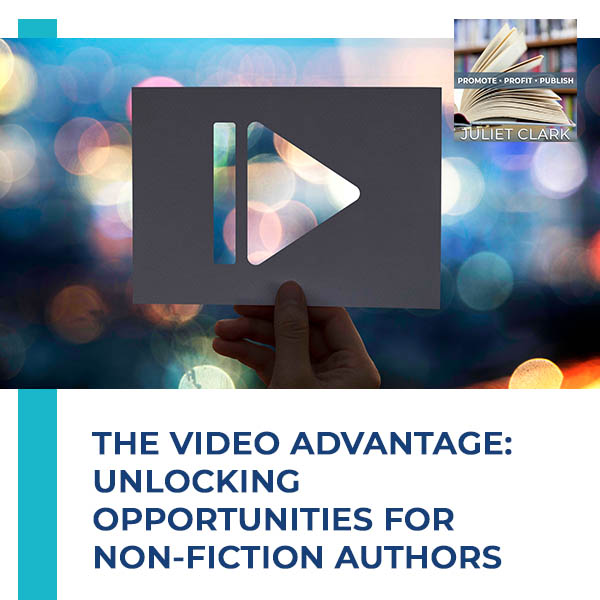


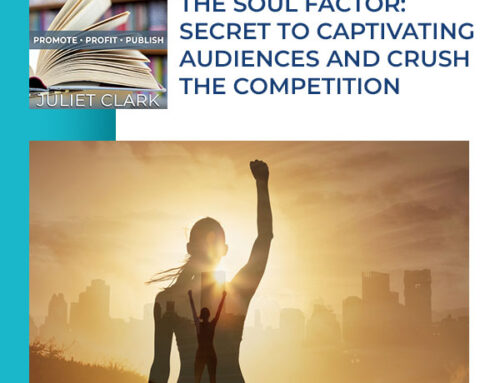
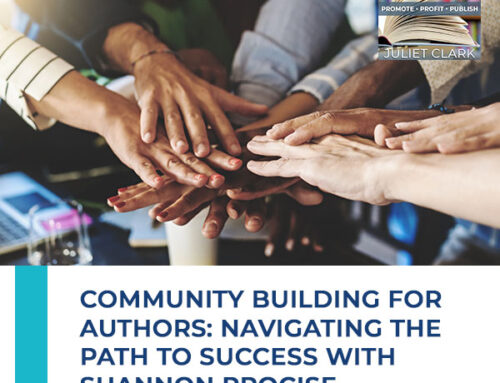
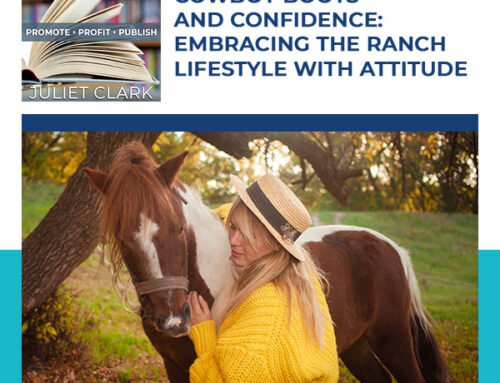


Leave A Comment